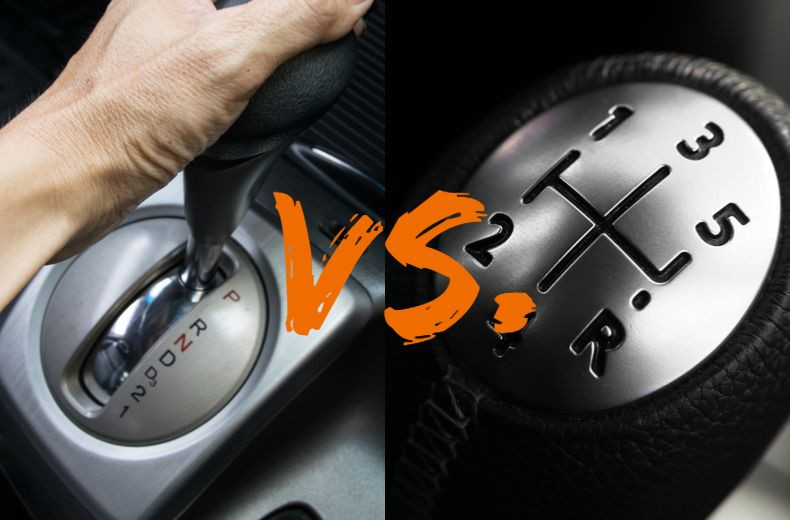When learning to drive, one of the most significant decisions you'll make is whether to choose a vehicle with a manual or automatic transmission. This choice can impact your driving experience, from handling and fuel efficiency to ease of use and maintenance. At GET DRIVERS ED, we understand that this decision is crucial for new drivers, and we're here to help you make an informed choice. In this blog, we'll explore the pros and cons of manual and automatic transmissions to help you determine which is right for you.
Understanding Manual Transmissions
Manual transmissions, also known as stick shifts, require the driver to manually shift gears using a clutch pedal and gear lever. This traditional transmission type offers a unique driving experience and several advantages, but it also comes with its own set of challenges.
Pros of Manual Transmissions
Enhanced Control
Manual transmission vehicles offer greater control over gear selection and engine power. This can be particularly beneficial in challenging driving conditions, such as on steep hills or during spirited driving. By shifting gears manually, you can adjust your driving to suit the road and your preferences.
Improved Fuel Efficiency
In many cases, manual transmission vehicles can achieve better fuel efficiency compared to their automatic counterparts. This is because manual transmissions often have fewer components and are generally lighter, resulting in less energy loss and better fuel economy.
Lower Initial Cost
Manual transmission vehicles are often less expensive to purchase compared to automatics. The simpler design and fewer components contribute to lower manufacturing costs, making them an affordable option for budget-conscious drivers.
Cons of Manual Transmissions
Learning Curve
Operating a manual transmission requires practice and skill. New drivers may find it challenging to master clutch control and gear shifting, which can lead to a steeper learning curve. This is where a thorough drivers ed program, such as those offered by GET DRIVERS ED, can be invaluable. Our courses cover both manual and automatic transmission techniques, ensuring you're well-prepared for any vehicle.
Increased Driver Fatigue
Driving a manual transmission can be more physically demanding, particularly in heavy traffic or on long trips. Constantly shifting gears and operating the clutch can lead to driver fatigue, making it less ideal for some drivers.
Limited Availability
With the rise of automatic transmissions, manual transmission vehicles have become less common in the market. This can limit your choices when shopping for a new car and may also affect resale value.
Exploring Automatic Transmissions3
Automatic transmissions are designed to shift gears automatically based on driving conditions, without the need for manual input from the driver. This type of transmission offers convenience and ease of use, but it also comes with its own set of advantages and disadvantages.
Pros of Automatic Transmissions
Ease of Use
Automatic transmissions are often preferred by new drivers due to their simplicity. With no need to manually shift gears or operate a clutch, driving an automatic can be less intimidating and easier to master. GET DRIVERS ED's drivers ed courses provide comprehensive training on automatic transmissions, ensuring you gain confidence behind the wheel.
Reduced Driver Fatigue
Driving an automatic transmission vehicle can be more comfortable, especially in stop-and-go traffic. The transmission automatically handles gear changes, allowing you to focus on other aspects of driving without the added effort of shifting gears.
Modern Technology
Many modern automatic transmissions come equipped with advanced technology, such as adaptive transmission control and overdrive features. These innovations can enhance driving performance, fuel efficiency, and overall driving experience.
Cons of Automatic Transmissions
Higher Cost
Automatic transmission vehicles generally come with a higher price tag compared to their manual counterparts. The added complexity and technology contribute to the increased cost, which may be a consideration for budget-conscious buyers.
Potential for Lower Fuel Efficiency
While many modern automatic transmissions are designed to be fuel-efficient, they can still be less economical than manual transmissions in certain situations. The additional components and weight can lead to slightly reduced fuel efficiency.
Less Driver Engagement
For some drivers, the lack of manual control in an automatic transmission vehicle can result in a less engaging driving experience. If you enjoy the tactile feedback and involvement of shifting gears, an automatic may feel less satisfying.
Conclusion
Choosing between a manual transmission and an automatic transmission is a personal decision that depends on your driving preferences, lifestyle, and comfort level. Both types of transmissions offer distinct advantages and drawbacks, and understanding these can help you make an informed choice. Whether you opt for the control and efficiency of a manual or the convenience and ease of an automatic, the key is to find a vehicle that suits your needs and driving style.
At GET DRIVERS ED, we offer comprehensive drivers ed courses that cover both manual and automatic transmissions. Our expert instructors provide the skills and knowledge needed to excel in any vehicle. Ready to enhance your driving skills and make the best choice for your future? Enroll in GET DRIVERS ED today and start your journey to becoming a confident and skilled driver!

